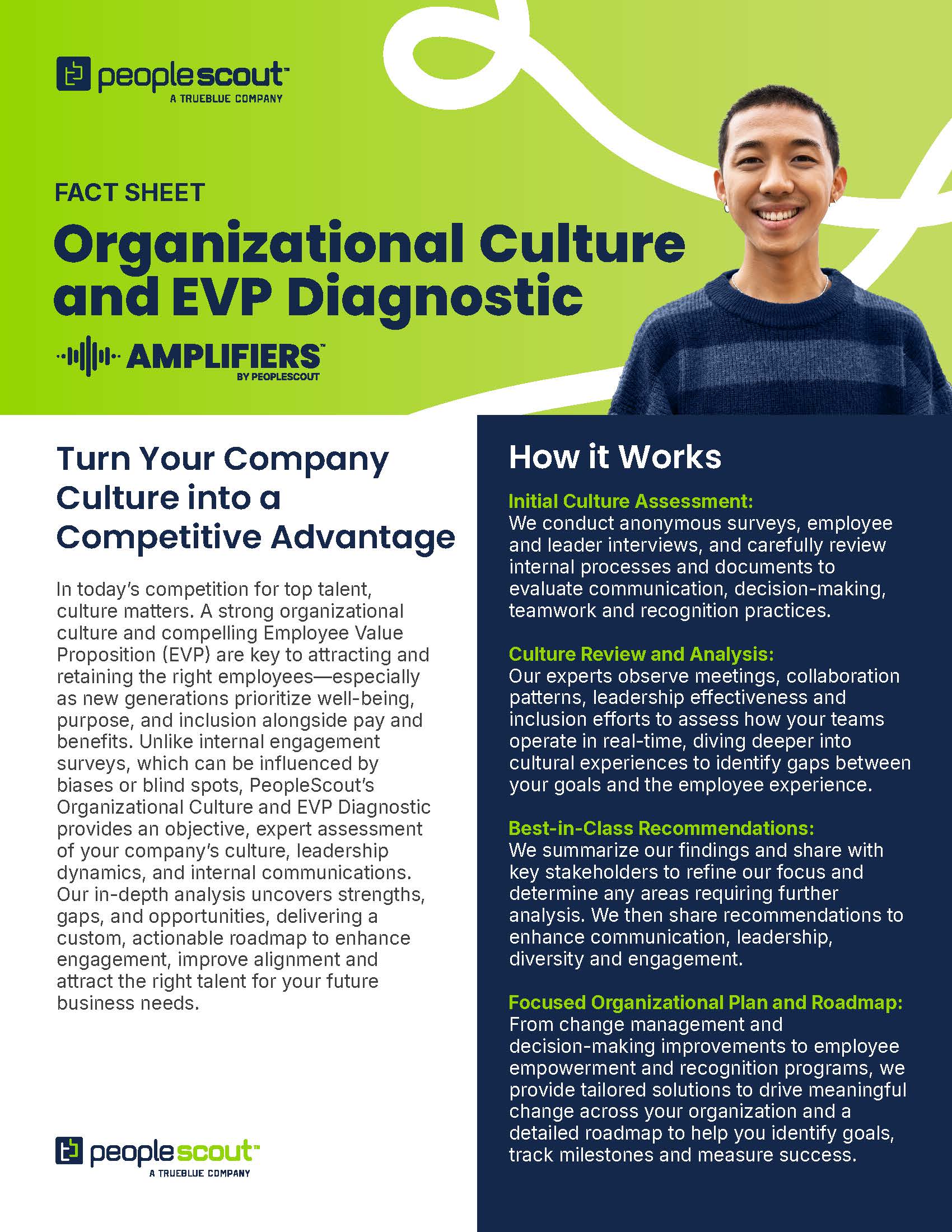Employers are facing a dual challenge: retaining top talent and filling critical roles. As the competition for skilled professionals intensifies, companies are turning their focus to their internal mobility program, recognizing the untapped potential within their own ranks.
Internal mobility isn’t just about moving employees between departments. It’s about creating a dynamic ecosystem where talent can flourish, skills can be developed and organizational knowledge can be leveraged to its fullest potential. Leading organizations are leveraging technology to support internal mobility, not only streamlining processes but also opening up new possibilities for employee growth and organizational success.
In this article, we’ll take a deeper look at internal mobility, the benefits for your business, and some best practices for building an effective internal mobility program.
What is Internal Mobility?
First thing’s first—what is internal mobility? Internal mobility refers to the movement—both vertically and laterally—of employees within an organization. Internal mobility has become a necessity for filling critical skills gaps left in organizations. Through an internal mobility program an organization develops a specific process for moving internal talent between roles.
Benefits of Internal Mobility
The benefits of internal mobility extend far beyond simply filling vacant positions, impacting not only individual employees but also team dynamics, organizational culture and the bottom line. Let’s explore the key advantages that make internal mobility a cornerstone of successful talent management strategies.
Save Time and Money
Research suggests that the cost to replace an employee can be high as 50% to 60% of their salary with overall losses to the company as high as 90% to 200%. Two of the biggest benefits of an internal mobility strategy are cost savings and the ability to operate more efficiently—especially during a time when many organizations are operating with leaner teams after scaling down in response to economic challenges.
The time and money spent on recruiting externally, like posting job ads, running recruitment marketing campaigns, sourcing and communicating with candidates can take a toll on already limited resources. Plus, external candidates often have higher salary expectations than internal employees. In fact, on average, the starting salary of an external hire is 18% to 20% more than that of internal candidates.
Retain Top Talent
Our recent research, The Skills Crisis Countdown, revealed a whopping 70% of employees would explore opportunities within their current organization before looking externally, which is great news for employers. By developing job skills within your organization and providing opportunities for mobility, you can achieve higher retention rates and reduce employee turnover. By implementing a skills-based internal talent mobility strategy, you’ll gain access to a robust pool of qualified internal candidates.
Boost Productivity
On average, it takes 28 weeks for a new employee to reach full productivity in a mid-level role. Internal mobility allows you to easily search your existing employees, targeting the people who know your business and are ready to grow their careers with you.
Internal candidates can use their experience with your organization’s structure and culture to acclimate and contribute to a new role quickly, often with less time spent on training. You’ll also have access to this talent almost immediately, allowing you to move quickly and reduce time spent searching for external candidates.
Drive Employee Engagement
A demonstrated investment in employee growth and development significantly boosts employee engagement. When organizations prioritize internal mobility, employees feel valued and motivated, seeing clear pathways for both upward and lateral career progression within the company. This sense of possibility and personal growth keeps employees intellectually stimulated, leading to higher levels of engagement and productivity.
Moreover, internal mobility creates a culture of continuous learning and adaptability. Employees who know they have opportunities to expand their skill sets and take on new challenges are more likely to stay curious and proactive in their professional development. As a result, organizations benefit from a more agile workforce, with an internal bench of engaged, qualified candidates ready to swiftly fill skills gaps and meet changing business needs.
Foster Diversity and Inclusion
An internal mobility program can be a great way to proactively develop the diverse talent already existing within your organization. Utilizing internal talent and providing opportunities for growth will improve diversity and inclusion at your organization overall and will aid in succession planning. By giving employees the opportunity to move up, reskill and take pathways for growth within your organization, you’ll be fostering a more diverse workforce at all levels, including leadership.
The Role of Technology in an Effective Internal Mobility Program
Technology can enhance your internal mobility program and save your talent acquisition team time in a variety of ways through artificial intelligence, automation and more. For example, PeopleScout’s Internal Mobility solution is boosted by our proprietary total talent suite, Affinix®. With the power of AI, we help employers to quickly source, promote and reassign talent across their organization, filling skills gaps now and into the future.
PeopleScout’s Internal Mobility solution offers a comprehensive approach to identifying, developing and mobilizing internal talent through four key modules:
- Internal Career Portal: A custom-branded platform delivers a best-in-class experience for employees to explore internal opportunities and manage their professional profiles.
- AI Matching and Search: Affinix AI technology automatically matches internal candidates to new roles based on their skills, experience and preferences.
- Employee Expression of Interest: Employees can self-identify for consideration in new internal opportunities as they become available.
- Skills-Based Assessments: Evaluates employees’ existing skills and experience against role requirements, identifying learning opportunities and skills gaps.
PeopleScout’s Internal Mobility solution enables a comprehensive view of employee skills and competencies, resulting in a more robust skills database and advanced job mapping.
Case Study: Internal Mobility in Practice
A government agency in Australia was operating with a lean workforce and limited resources. They required a solution that allowed them to leverage the skills and competencies of their existing workforce so they could save time, costs and resources.
They turned to PeopleScout’s Internal Mobility solution to launch a platform to find and support workers looking to move within their department or to other agencies within the Australian government.
Solution Highlights
PeopleScout deployed our Internal Mobility solution, powered by Affinix, to give the client insight into the scope and experience of their internal talent. With our solution:
- Employees self-manage their profiles which showcase demographics, education and work history. Plus, they can self-rate on specific skills and key competencies.
- Employees are given priority access and visibility to all job opportunities across the agency before they are advertised externally.
- AI technology matches candidates to open opportunities and provides alerts to candidates on open job opportunities.
- Engagement rates of existing staff increased, while the use of expensive contingent labor resources went down.
- Recruiters have a strong sense of what other positions may be a good fit for internal employees, based on hard and soft skills assessments.
The client experienced a more engaged workforce as a result of enhanced workforce mobility, skills development and career opportunities.
9 Best Practices for Building an Internal Mobility Program
Implementing a successful internal mobility program requires thoughtful planning and execution. While every organization’s needs are unique, we’ve developed certain best practices to guide our clients in creating a robust and effective program. The following strategies can help you build a culture that not only supports but actively encourages internal mobility, ensuring that both your employees and your organization reap the full benefits.
1. Establish Clear Policies and Processes
Develop a comprehensive policy that outlines eligibility criteria, application procedures and timelines for internal moves. This should include guidelines for how long an employee needs to be in their current role before applying for an internal move, the process for informing their current manager, and how internal candidates will be evaluated. Ensure these policies are easily accessible to all employees and that HR and management are aligned in their implementation.
2. Develop a Skills Inventory
Create a centralized database of employee skills, experiences and career aspirations by conducting an internal mobility skills audit. This inventory should be dynamic, allowing employees to update their profiles regularly. Use skills assessment tools to objectively evaluate competencies and consider implementing AI technologies to help you identify skill gaps and potential matches for open positions. This comprehensive view of your workforce’s capabilities enables you to get the most out of your talent and helps identify areas for training and development.
3. Implement a User-Friendly Internal Career Portal
Your internal career portal should be more than just a list of open positions. It should be intuitive and engaging, with detailed job descriptions, required and desired skills and potential career paths. Make sure it includes features like self-managed professional profiles and expression of interest capabilities. Ensure the platform is mobile-friendly to increase accessibility and engagement.
4. Encourage Cross-Departmental Collaboration
Boost upskilling at your organization by creating opportunities for employees to work across different teams and departments. This could involve establishing cross-functional project teams, implementing a formal job rotation program or organizing “innovation days” where employees from different areas come together to solve organizational challenges. These initiatives not only broaden employees’ skills but also increase their visibility across the organization, opening up more potential paths for mobility.
You may also consider creating an endorsement and referral system in which a manager can refer an employee for an opening and provide their endorsement. This gives recruiters and hiring managers additional insight into which employees may be the best fit for open roles based on feedback from leaders who have worked directly with the internal candidate.
5. Provide Career Development Resources
Invest in a robust suite of career development tools and resources. This might include access to online learning platforms, workshops on career planning and skill development, or a formal mentorship program. Consider implementing individual development plans for all employees, with regular check-ins during which employees can discuss progress with their managers or mentors and adjust goals. The key is to empower employees to take charge of their own career development while providing the necessary support and resources.
6. Align with Business Strategy
Ensure your internal mobility program is not operating in isolation but is tightly integrated with your overall business strategy. Regularly review how internal moves are supporting key business objectives and addressing critical skill gaps. Involve leadership in identifying future skill needs in order to shape the direction of the program. This alignment ensures that internal mobility is not just benefiting individual employees, but actively contributing to your organization’s success.
7. Communicate Transparently
Develop a comprehensive communication strategy to promote your internal mobility program. Inform employees of the new program and provide clear guidance on how to navigate the internal job market, how the process will work and what to expect after applying for a role. If you have specific internal mobility software, include training on how to access the platform, create a profile, view job openings and submit an expression of interest or application.
Communications should include regular updates on open positions, success stories and program benefits. You could even provide tips on how to prepare for internal interviews and how to transition between roles. Consider hosting regular information sessions or webinars to address common questions and concerns.
8. Measure and Iterate
Establish key performance indicators (KPIs) for your internal mobility program, such as internal fill rate, time-to-fill for internal vs. external hires, employee satisfaction scores and retention rates of internally moved employees. Consider collecting feedback through surveys and focus groups to understand the employee experience with the program. With this data you can refine and improve your processes, addressing pain points and capitalizing on what’s working well.
9. Leverage an RPO Partner to Support Internal Mobility
Partnering with a Recruitment Process Outsourcing (RPO) provider can significantly enhance your internal mobility efforts. A skilled RPO partner can bring expertise in talent assessment, market insights and advanced recruiting technologies to your internal mobility program. They can help streamline the process of identifying and evaluating internal candidates, provide objective assessments of skills and potential and offer valuable benchmarking data.
Additionally, an RPO partner can support the development of internal talent pipelines and even manage aspects of your internal job board and internal recruitment process. By leveraging an RPO’s resources and knowledge, you can create a more robust, efficient and data-driven approach to internal mobility that complements your existing HR capabilities.
Internal Mobility & the Future of Work
As organizations navigate the complex landscape of talent acquisition and retention, internal mobility has emerged as a critical strategy for building a resilient and adaptive workforce. In an era where agility is paramount, internal mobility programs have become essential for fostering a dynamic and engaged employee base.
The role of technology in boosting internal mobility cannot be overstated. From AI-powered matching and search to skilled-based assessments, these advancements are transforming how organizations approach internal talent development and deployment.
By leveraging both advanced technologies and RPO partnerships, organizations can create a robust internal mobility program that supports continuous learning, career growth and workforce planning. This multifaceted approach not only aids in retaining top talent with key skills but also in developing a workforce that can swiftly adapt to changing business needs.








